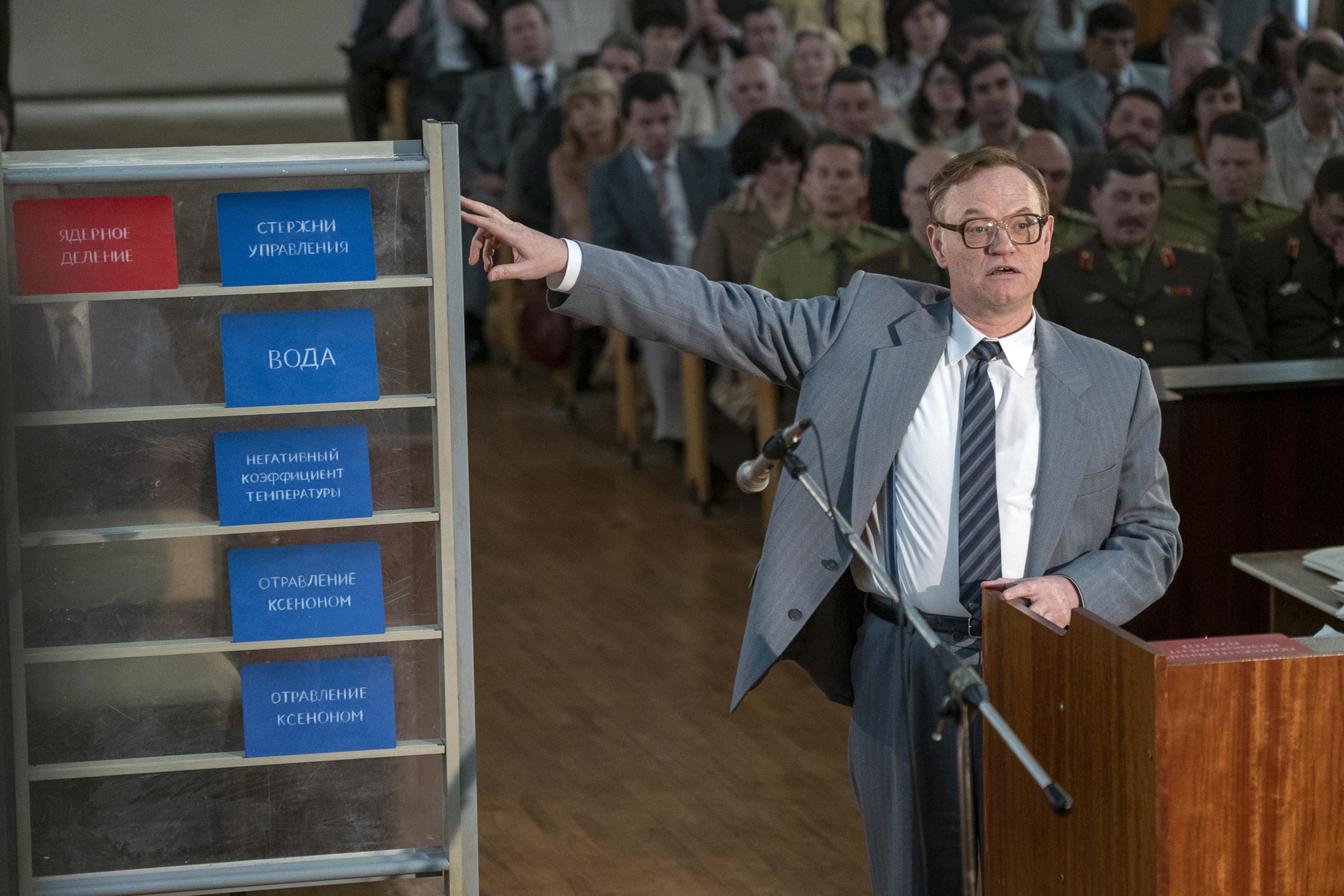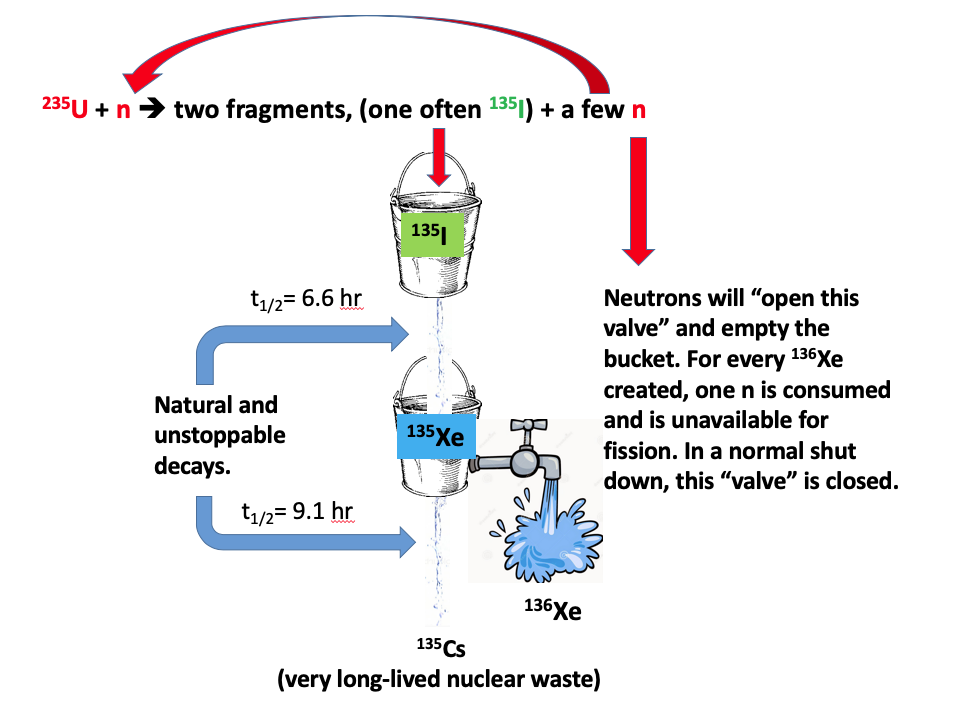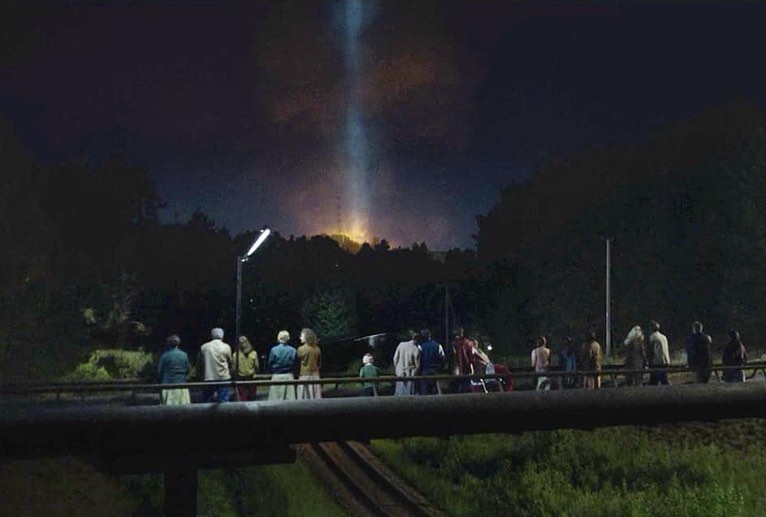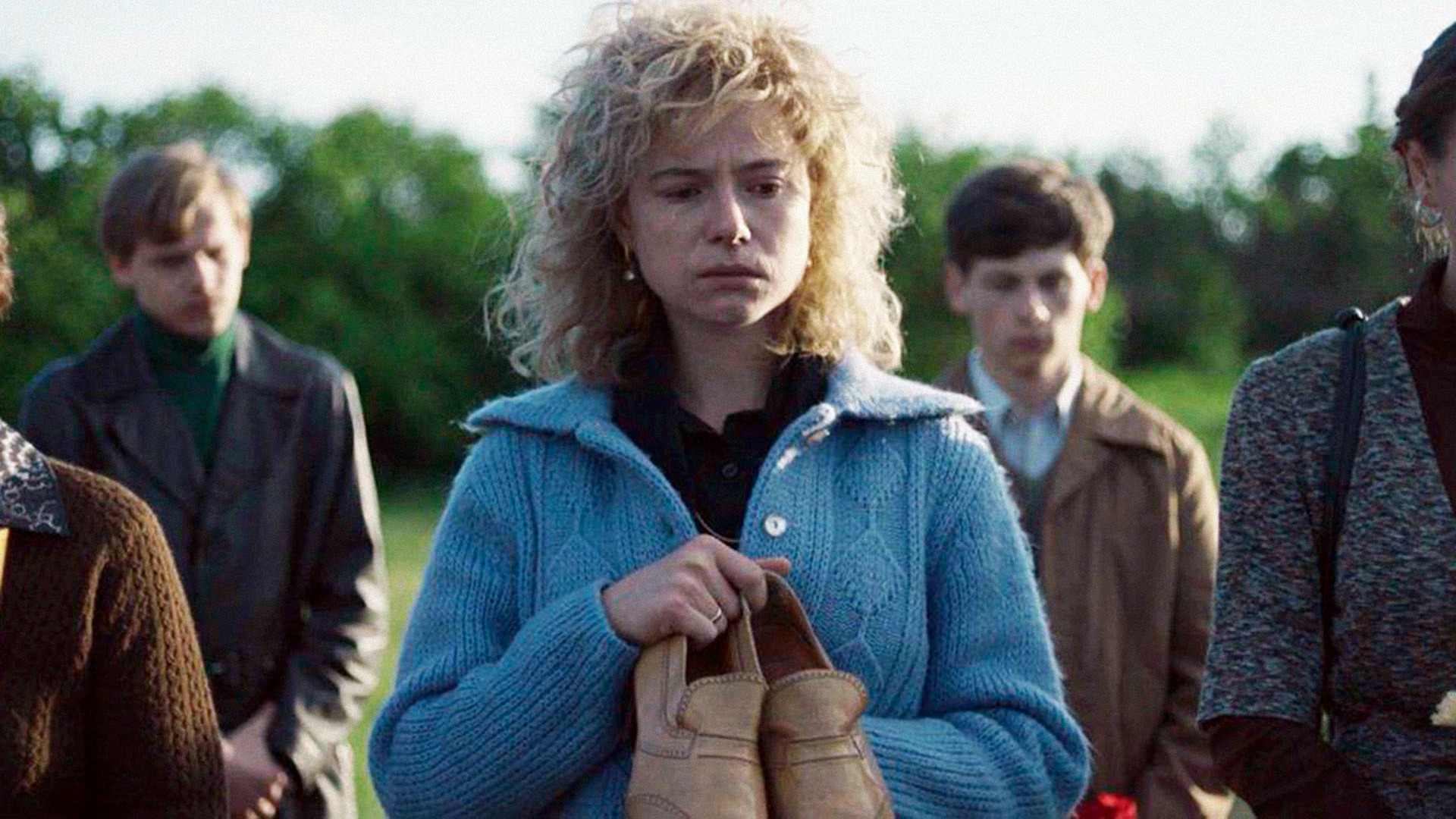The world shook on April 26, 1986, when the newest reactor at the Chernobyl site exploded. A popular HBO series aired this summer detailing, and dramatizing, what happened. This essay offers a commentary on the HBO series, intended for those who watched all five episodes, focusing on the technical but broaching the subject of how humans and societies construe nuclear technology.
Those of us of a certain age remember that the world shook on April 26, 1986. The newest reactor (#4) at the Chernobyl site exploded, 50 miles north of Kiev in the Ukraine and only a few miles from the border with Belarus. The reports from the USSR were not informative, but fission products (ash from the nuclear fission process) were being reported in air samples throughout Europe. There was a run on iodine pills and a dramatic increase in elective abortions. Today, Chernobyl remains a cultural touchstone for the dangers of nuclear technology, serving as a comparison for any nuclear accident.
A popular HBO series, Chernobyl, was aired this summer detailing, and dramatizing, what happened. The creators of this series were not afraid of technical scientific details, as they realized the story had a scientific core wrapped in how humans, as well as the Soviet bureaucracy, responded to complex truths, both politically troublesome and culturally traumatic. This essay offers a commentary on the HBO series, intended for those who watched all five episodes, focusing on the technical aspects but broaching the subject of how humans and societies construe nuclear technology.
Science and Technology
While no short presentation can do justice to the accident, HBO’s depiction of the reactor failure was masterfully done. To nuclear scientists, the idea that you could take a reactor that had been running at normal power, reduce it to an idling power level, and then bring it back up to full power, is foolish and known to be so from experience gained in the early 1940s from the Hanford, WA reactor that produced plutonium for the Manhattan Project.

As explained in episode 5 of Chernobyl, "Vichnaya Pamyat" (Ukrainian for "memory eternal"), there are positive (red cards) and negative (blue cards) drivers of reactor "reactivity." Think of this reactivity, call it "k," as the change in the energy released in the fission process with time. Neutrons both initiate fission and are generated by fission. This is where the term "chain reaction" comes from. Consider it this way: k is the amount of fission at one time, compared to what it was an instant before. So, k = 1 means that the fission rate is constant, less than 1 means the rate is spiraling down, and greater than 1 means it is increasing. A good human analogy is birth rate. If k < 1, you have a birth rate that leads to reducing population, whereas k > 1 leads to a growing population. In any analogy, k > 1 cannot go on forever.
In nuclear fission, a heavy nucleus (i.e. uranium-235) and a neutron combine, producing two smaller nuclei and a few free neutrons while releasing a lot of energy. (Note that energy is never made. The energy release comes from the fact that the mass of the products is less than the mass of reactants.) About 6.5% of the fission events produce iodine-135. This nucleus is unstable and decays with a half-life of 6.6 hours to xenon-135, which itself has a "natural" half-life of 9.1 hours. The mental image is that fission fills a bucket called 135I, and that bucket has a hole in it that fills another bucket labeled 135Xe that also has a hole in it.

What was understood in the 1940s is that the daughter bucket (135Xe) can also be drained by the neutrons generated in fission, i.e. 135Xe is lost by making 136Xe. (135Xe reacts with neutrons about a million times faster than most other nuclei.) 135Xe is called a "reactor poison" because it throttles back k by consuming neutrons, reducing the likelihood of continuing the fission chain. In a reactor running at a steady(-state) rate of k = 1, the amount of 135Xe being made and the amount of 135Xe being lost by neutron capture or natural decay are equal. 135Xe serves as a "blue" card. If you turn a reactor off, or throttle it back, fission and the neutron flux drops. The parent bucket is full and empties, over time, into the daughter (135Xe) bucket. As there are no (or few) neutrons, the only way the 135Xe poison is removed is through its small "natural" decay hole.

As a consequence, this bucket actually fills up for the first several hours when a reactor is turned off or throttled back. 135Xe acts as a giant "blue" card, eating neutrons and driving k to zero, thus preventing reinitiating a chain reaction. Normal reactor operation will simply wait a few days until the parent and daughter buckets empty through their natural holes before attempting to restart. This is not what happened at Chernobyl.
A test mandated for final certification of reactor 4, a test attempted 3 times before, required a somewhat reduced power. This test was started and then delayed by a request for power from Kiev. During the hours-long delay, the poison built up, reactor power ultimately dropped, and all controllable (blue) elements were removed in an attempt to restart the reactor. Fission ultimately restarted, neutrons were produced, the poison rapidly converted to innocuous 136Xe (removing a large blue card), and k skyrocketed.
All reactors since Enrico Fermi’s first reactor under Stagg Field in Chicago have what is called a "SCRAM" procedure for extremely fast emergency shut down. The acronym SCRAM stands for "Safety Control-Rod Axe Man." While the truth is more complex, a reasonable mental image of a satisfactory SCRAM procedure is of a man with an axe who severs a rope that, via a pulley, held up "control rods" containing neutron-absorbing elements. As the neutron-absorbing elements enter the reactor, k plummets and must do so at all points in the reactor. This is not what happened at Chernobyl.
In Russian high-power channel-type reactors (RBMK), the SCRAM procedure had a design that can only be understood if one appreciates that these reactors evolved from ones with a purpose other than civilian power production. That is, simplicity, rather than safety, was paramount. In RBMK, upon pushing the SCRAM (AZ5) button, the control rod insertion (initially) increased k because the leading edge contained carbon, which is a (red) k-increasing element. The interaction of neutrons with pure carbon slows down the neutrons, increasing their deBroglie wavelength that in turn increases the fission rate. Further, the rods displaced water that could otherwise absorb neutrons and act as a (blue) throttling component. If the rods were fully inserted, k would plummet as neutron-consuming boron-10 entered the reactor. This throttling "blue" component is designed to be human controllable. The Chernobyl operators never got to this point because the channels the rods slide down were compromised by the overheated reactor, and k at the bottom of the reactor dramatically increased where neutron absorbing water was displaced.
Why didn’t the Chernobyl operators understand the potential consequences of the control-rod design? There had been previous power surges in similar reactors, at least one leading to substantial core damage. The answers are based in Soviet culture, which downplayed failures and sequestered knowledge in an effort to maintain the myth that the reactors were safe. In fact, the basic RBMK reactor design allowed for great nonuniformity (and excess) of the reactivity and had a SCRAM procedure that was, at the very least, problematic.
To recap: A reactor, with designed excess reactivity, was driven into a very unstable state. This happened by executing a test under dangerous conditions (not in the planned test scenario) caused by a delay during which the reactor, operating in a low-power mode, generated extreme amounts of 135Xe. The management should have cancelled the test at this point, but full certification of this reactor required this test, and the political pressure was extreme. The delay put operators on duty that were not prepared for the task, nor were they capable of questioning the deputy chief engineer who thought he understood the reactor better than he did. His hubris, in significant measure, was due to a cultural system that avoided the unpleasant truth about the full consequences of the control-rod design.
Before moving on, it must be mentioned that while the technical drivers of the accident are clear, full simulations—to this day—are not. This is in part due to the difficulty in predicting the presence and significance of supercritical (metastable) water at the bottom of the reactor.
Humans, Science, and Technology

The portrayal of the human health effects of the accident is made difficult by the nonuniformity of the radiation dispersal, biology, and, most complex, the entanglement of these effects with human psychology. One has to try to disentangle what is true from what people might have thought was true about the effects of radiation on human health (at the time or even now) and even address the topic of what the consequences are of what people thought/think was/is true but was/is not. We must recognize that health can be damaged by what one "knows" that is just not so. We also have to accept that simple perceived truths are often not.

Even the stories of the first responders (the liquidators) are not simple. About thirty first responders died horrible deaths. The series seared images of extreme radiation-induced erythema into our memories. But, we also know that two of the "divers" are still alive today, and the third diver died of a cause unlikely linked to radiation. On the other hand, there are cases of people who lived and worked in the surrounding areas who certainly died of radiation-induced illnesses. The total number of deaths from the accident, integrated over all time, is a number we cannot know, but it is likely several orders of magnitude larger than the number who died of acute radiation exposure. This total number could be smaller, larger, or commensurate with the number of elective abortions throughout Europe due to a perceived threat. The direct, or exacerbating, health consequences from family and large-scale societal disruption and major anxiety are also unknowable.

Take the example of the Lyudmilla Ignatenko, the wife of the firefighter who died from extreme radiation exposure. She visits him throughout his final days, and months later her newborn baby dies hours after birth. Viewers are led to believe that Lyudmilla's husband exposed her and the fetus to radiation, which was absorbed by the fetus, saving the mother. This is highly unlikely. The firefighter died from a huge radiation exposure from external sources. He likely inhaled significant airborne radioactivities that would have made him radioactive. While such ingested activities could have contributed to his illness, it was not the cause of death. The reason for isolation of the firefighter was that his white blood cell count, and thus his immune system, was compromised by the acute exposure.
Without mention of the radiation dose received from standing near the exposed firefighter, the series is misleading. Consider this: Our hospital injects dozens of people every day with radioactivity, for diagnostic imaging, and they go home to their spouses and normal lives. You may take a class where the professor had a heart scan the previous day. The point is that the threat to an external person from radiation as depicted in this drama is unsubstantiated. Lyudmilla's presence in Pripyat, after the accident and during early pregnancy, could have had consequences for the fetus. From another perspective, the extreme anxiety Lyudmilla and others experienced could also generate serious consequences.
Conclusion
On the whole, the series lays bare the house of cards created by the Soviet bureaucracy and handles a complex technical incident with some clarity. On the downside, to do so the series fabricates a hero who facilitates digestion of the dramatization. A Russian storyteller would not have been afraid of a larger cast and, in this regard, would have represented reality better. The fabricated character misrepresents both what was, and in some details remains, a foggy story and the opaqueness of the curtain between science and policy. We can engineer better systems (nuclear or other), but we must also prevent the separation of science from policy, the general public, and, as was done in the RBMK design, the skeptical analysis of other scientists.
Authors' Note
Lee Sobotka, professor of chemistry and physics, specializes in nuclear science. Suzanne Loui, lecturer in environmental studies, is the course instructor for "Fallout: Analyzing Texts and Narratives of the Nuclear Era." The authors acknowledge discussions with a Kurchatov Institute scientist.





